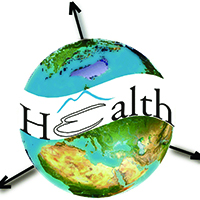Spatial distribution and identifying biochemical factors affecting haemoglobin levels among women of reproductive age for each province in Indonesia: A geospatial analysis

Accepted: 10 October 2022
HTML: 55
All claims expressed in this article are solely those of the authors and do not necessarily represent those of their affiliated organizations, or those of the publisher, the editors and the reviewers. Any product that may be evaluated in this article or claim that may be made by its manufacturer is not guaranteed or endorsed by the publisher.
Authors
Anaemia is still a public health problem in Indonesia. The iron supplement program, known as Tablet Tambah Darah (Blood Add Tablet) has not yet produced optimal results. This study aimed to identify the cause of anaemia and the factors that influence it. Biochemical indicator data are haemoglobin (Hb), C-reactive protein (CRP), ferritin and serum transferrin receptor (sTfR) from 9,463 women of reproduction age. Data from the Basic Health Research (Riskesdas) project of 2013 were used for the study. ANOVA as well as global and local regression approaches (classical regression and geo-weighted regression) were used to compare the mean Hb and CRP values between provinces and to determine the factors that influence Hb concentrations. The results showed that the distribution of anaemia in Indonesia is uneven and not always caused by iron deficiency. The lowest Hb mean coupled with the highest iron deficiency was found in Papua, where there are high rates of parasitic infections. In contrast, the highest mean Hb coupled with low iron deficiency, and also low infection rates, was found in North Sulawesi. The Hb concentrations were significantly associated by ferritin, CRP and sTfR and there were varying magnitudes between provinces. Although anaemia is mainly influenced by the iron concentration, CRP, ferritin and sTfR can also affect it through their association with inflammatory reactions. Identification of all causes of anaemia in each province needs to be done in the future, while blanket iron supplementation should be reviewed.
How to Cite

This work is licensed under a Creative Commons Attribution-NonCommercial 4.0 International License.
PAGEPress has chosen to apply the Creative Commons Attribution NonCommercial 4.0 International License (CC BY-NC 4.0) to all manuscripts to be published.

 https://doi.org/10.4081/gh.2022.1118
https://doi.org/10.4081/gh.2022.1118




